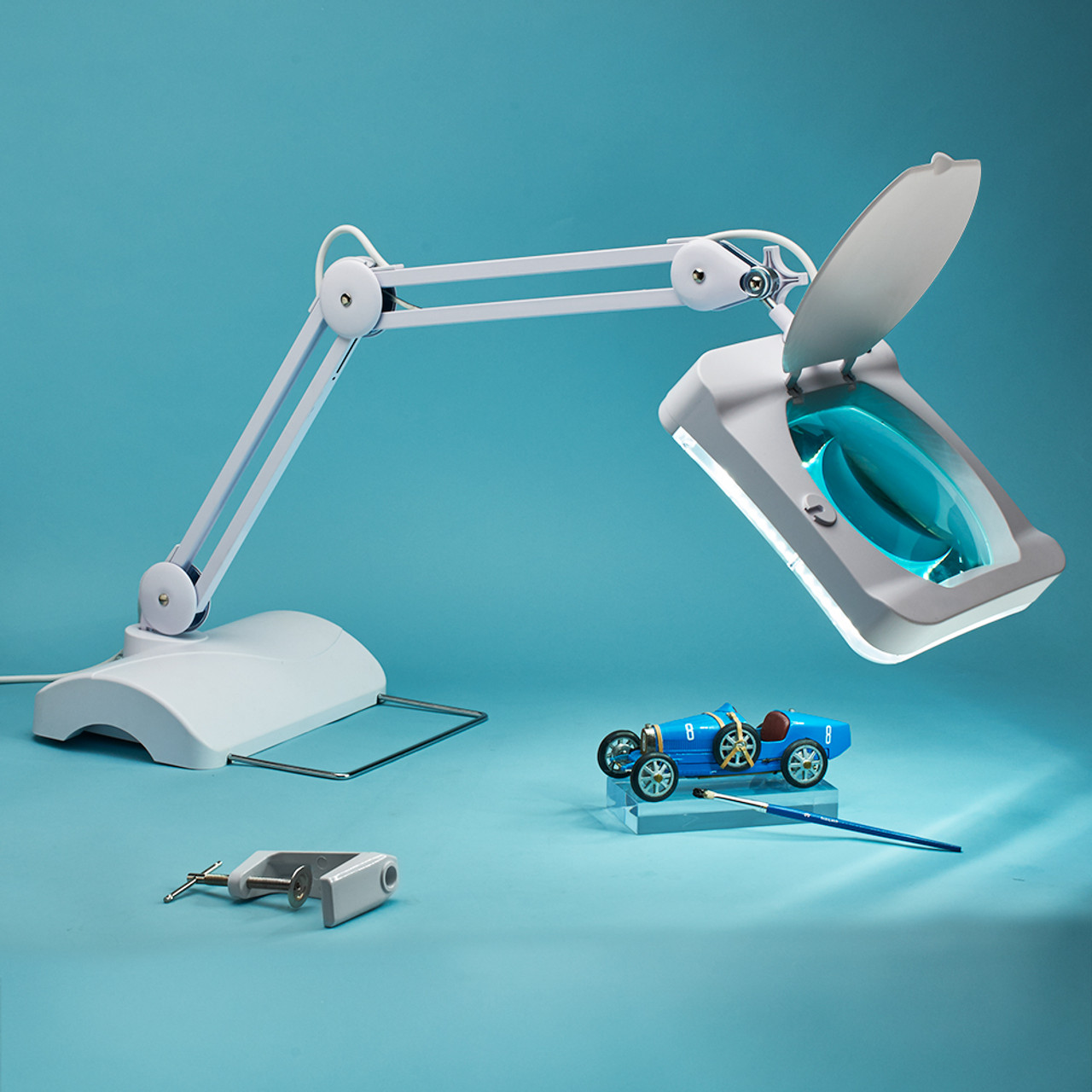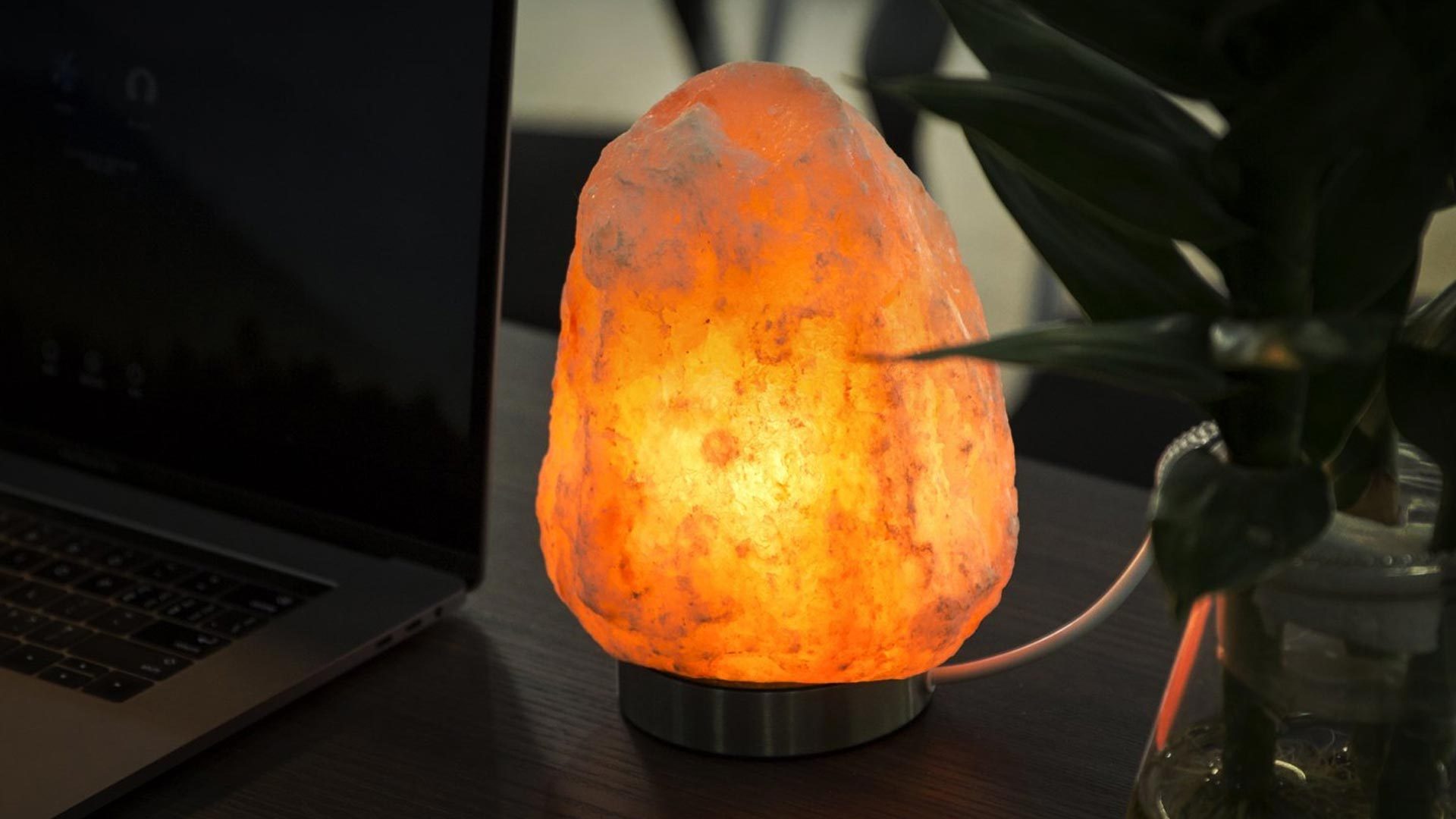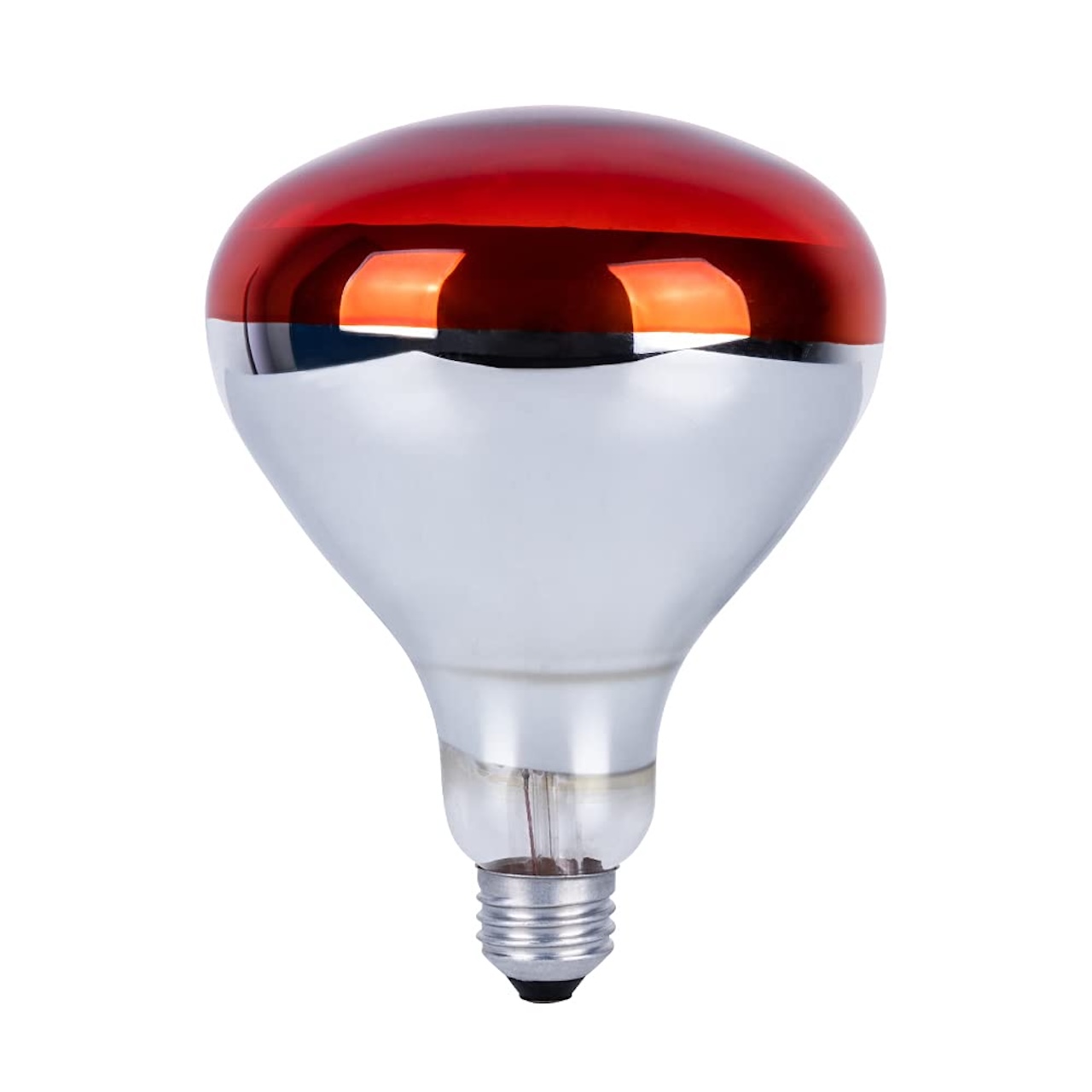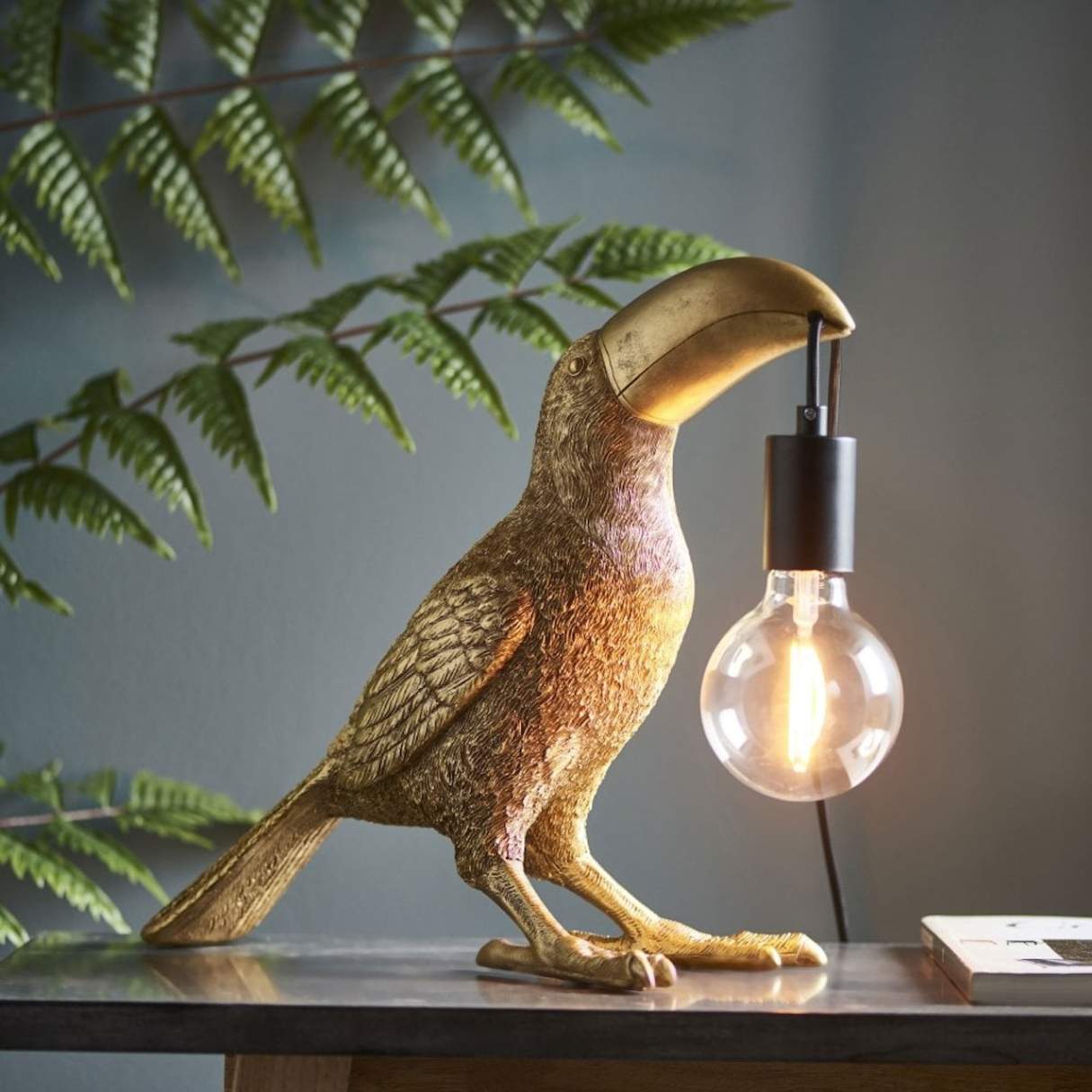Home>Furniture>How Long Can A Properly Maintained Magnifying Lamp Last
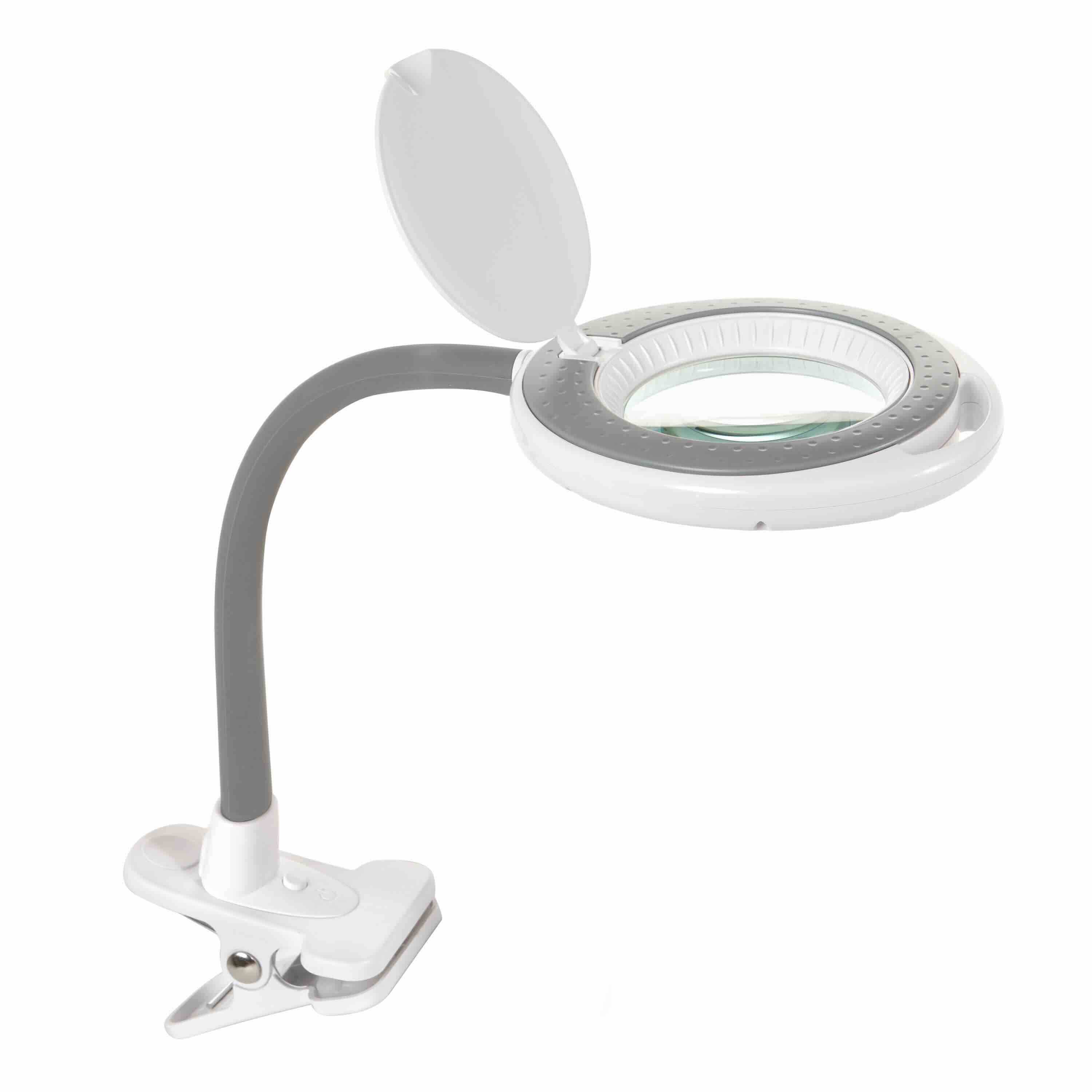

Furniture
How Long Can A Properly Maintained Magnifying Lamp Last
Modified: March 6, 2024
Discover how long a properly maintained magnifying lamp can last with expert tips on furniture maintenance and care.
(Many of the links in this article redirect to a specific reviewed product. Your purchase of these products through affiliate links helps to generate commission for Storables.com, at no extra cost. Learn more)
Introduction
Welcome to the world of magnifying lamps – a tool cherished by professionals and hobbyists alike for its ability to provide enhanced clarity and precision. Whether you’re a jeweler examining intricate details, a dentist performing delicate procedures, or a hobbyist working on your latest project, a properly maintained magnifying lamp can be your best companion.
In this article, we will explore the importance of proper maintenance for magnifying lamps and how it can significantly extend their lifespan. We will also discuss the various factors that can affect the longevity of a magnifying lamp and provide practical tips for maintenance.
A magnifying lamp consists of a magnifying lens, a light source, and an adjustable arm for positioning. Its primary function is to provide magnification and illumination, allowing users to see fine details clearly. However, like any other tool, a magnifying lamp requires regular upkeep to ensure optimal performance and longevity.
Proper maintenance of a magnifying lamp offers numerous benefits. First and foremost, it ensures that the lens remains clear and free from dust and debris, allowing for pristine clarity and accurate viewing. Regular maintenance also helps prevent the deterioration of electrical components, such as the bulb and wiring, reducing the risk of malfunction or electrical hazards.
Moreover, by maintaining a magnifying lamp, you can maximize its lifespan and cost-effectiveness. A well-maintained lamp will serve you for years, saving you the hassle and expense of frequently replacing it. It also contributes to a more sustainable approach by reducing waste.
Next, let’s delve into the factors that can affect the lifespan of a magnifying lamp and explore some practical tips for proper maintenance.
Key Takeaways:
- Proper maintenance of a magnifying lamp, including regular cleaning and bulb replacement, can significantly extend its lifespan, ensuring clear visibility and optimal performance for years to come.
- By handling a magnifying lamp with care, avoiding physical damage, and following manufacturer’s guidelines for storage and transportation, you can protect your investment and enjoy its benefits over an extended period.
Read more: How Long Does An Oil Lamp Last
Importance of Proper Maintenance
Proper maintenance plays a crucial role in ensuring the longevity and optimal performance of a magnifying lamp. By following a regular maintenance routine, you can enjoy the following benefits:
- Prolonged Lifespan: Regular maintenance allows you to identify and address any issues promptly, preventing them from escalating and causing further damage. By addressing minor problems early on, you can extend the lifespan of your magnifying lamp and avoid expensive repairs or replacements.
- Enhanced Clarity: Dust, fingerprints, and debris can accumulate on the lens of a magnifying lamp over time, hindering clarity and reducing the effectiveness of the magnification. Regular cleaning and maintenance ensure that the lens remains clean and free from obstructions, providing optimal clarity for your work.
- Improved Safety: A well-maintained magnifying lamp reduces the risk of electrical malfunctions or hazards. Regular checks and maintenance of the electrical components help identify any potential issues early on, ensuring a safe working environment.
- Cost Savings: Investing time and effort in proper maintenance can save you money in the long run. By extending the lifespan of your magnifying lamp, you can avoid the need for frequent replacements, reducing expenses and promoting a more sustainable approach.
Proper maintenance is especially vital for professionals who rely heavily on their magnifying lamp for their work. Jewelers, dentists, beauticians, and other professionals can benefit from regular maintenance by ensuring that their magnifying lamp always performs at its best, allowing them to deliver high-quality service to their clients.
Now that we understand the importance of proper maintenance, let’s explore the factors that can influence the lifespan of a magnifying lamp.
Factors Affecting the Lifespan of a Magnifying Lamp
Several factors can influence the lifespan of a magnifying lamp. Being aware of these factors and taking appropriate measures can help prolong the longevity of your lamp. Here are some key factors to consider:
- Quality of Materials: The quality of the materials used in the construction of a magnifying lamp can significantly impact its lifespan. Opting for lamps made with durable and high-quality materials ensures longevity and reduces the risk of premature wear and tear.
- Frequency of Use: The more frequently you use a magnifying lamp, the more strain it experiences. Continuous usage can put stress on the electrical components and the bulb, potentially shortening its lifespan. If you use the lamp extensively, consider investing in a lamp with a higher wattage bulb or even multiple bulbs to distribute the usage.
- Environmental Conditions: The environment in which a magnifying lamp is used can also affect its lifespan. Exposure to excessive heat, moisture, or dust can damage the electrical components and the lens over time. It is essential to keep the lamp in a clean and controlled environment to minimize the risk of damage.
- Maintenance Practices: The regularity and quality of maintenance performed on the magnifying lamp can significantly impact its lifespan. Cleaning the lens regularly and ensuring proper functioning of the electrical components through checks and replacements as needed are crucial maintenance practices that can extend the lamp’s lifespan.
- Power Surges and Electrical Issues: Power surges or electrical issues can cause damage to the electrical components of a magnifying lamp. It is advisable to use surge protectors or voltage regulators to safeguard against such issues and prevent potential damages.
- Mishandling and Physical Damage: Accidental mishandling or physical damage can also impact the lifespan of a magnifying lamp. Dropping the lamp, applying excessive force, or improper storage can lead to structural damage or electrical problems. Always handle the lamp with care and follow the manufacturer’s instructions for storage and transportation.
By considering these factors and implementing proper maintenance practices, you can significantly increase the lifespan of your magnifying lamp. In the next sections, we will explore some common maintenance practices that you can follow to ensure the optimal performance of your lamp.
Common Maintenance Practices
To ensure the longevity and optimal performance of your magnifying lamp, it is important to follow certain maintenance practices. By incorporating these practices into your routine, you can keep your lamp in excellent condition. Here are some common maintenance practices to consider:
- Cleaning the Magnifying Lens: Regularly cleaning the magnifying lens is crucial to maintain clear visibility. Use a soft, lint-free cloth or lens cleaning solution to gently wipe the lens in a circular motion, removing any dust, smudges, or fingerprints. Avoid using abrasive materials or harsh chemicals that could damage the lens.
- Replacing the Bulb: The bulb of a magnifying lamp is one of its vital components. Regularly check the condition of the bulb and replace it when necessary. Bulbs can dim over time, affecting the quality of illumination and the effectiveness of the magnification. Follow the manufacturer’s instructions for bulb replacement, ensuring that you use the correct type and wattage.
- Checking and Replacing Electrical Components: Electrical components, such as switches, cords, and transformers, should be inspected regularly for any signs of wear or damage. Check for loose connections, frayed wires, or exposed parts. If you notice any issues, have them repaired or replace the defective components as soon as possible to prevent further damage or electrical hazards.
- Avoiding Physical Damage: Mishandling or physical damage can significantly impact the lifespan of a magnifying lamp. Always handle the lamp with care and avoid dropping it or subjecting it to excessive force. When not in use, store the lamp properly in a safe place away from potential hazards. Follow the manufacturer’s guidelines for proper storage and transportation.
- Keeping the Lamp Dust-Free: Dust and debris can accumulate on the lamp’s surface, affecting its performance. Regularly dust the lamp using a soft cloth or a brush to remove any particles. Pay attention to the crevices and hard-to-reach areas where dust tends to accumulate. Keeping the lamp dust-free not only improves its visual appeal but also helps prevent potential issues caused by dust buildup.
- Lubricating Adjustable Parts: If your magnifying lamp has adjustable parts, such as an adjustable arm or a swivel base, lubricate the movable joints periodically. This ensures smooth and effortless movement while reducing the risk of stiffness or damage. Use a silicone-based lubricant recommended by the manufacturer for this purpose.
By following these common maintenance practices, you can ensure that your magnifying lamp remains in top-notch condition, allowing you to enjoy its benefits for years to come. In the next sections, we will delve deeper into specific maintenance tasks, such as cleaning the magnifying lens and replacing the bulb.
Cleaning the Magnifying Lens
The magnifying lens is a critical component of a magnifying lamp, responsible for providing clear and detailed visibility. Regularly cleaning the lens is essential to maintain optimal clarity and ensure accurate magnification. Here are some steps to follow when cleaning the magnifying lens:
- Gather the necessary supplies: Before starting the cleaning process, gather the required supplies, including a soft, lint-free cloth or lens cleaning solution. Avoid using abrasive materials or harsh chemicals that could potentially damage the lens.
- Switch off and unplug the lamp: Before cleaning the lens, ensure that the magnifying lamp is switched off and unplugged from the power source. This eliminates the risk of electrical shock and allows for safe handling of the lamp during the cleaning process.
- Remove any debris: Prior to cleaning, inspect the lens for any visible debris such as dust or smudges. Use a soft brush or air blower to remove loose particles from the surface of the lens. This step helps prevent scratching the lens during the cleaning process.
- Clean the lens: Dampen the soft, lint-free cloth with lens cleaning solution or use a mild soap solution. Gently wipe the surface of the lens in a circular motion, starting from the center and moving towards the outer edges. Avoid applying excessive pressure to the lens, as it may cause scratches or damage.
- Dry the lens: After cleaning, use a clean, dry, lint-free cloth or lens cleaning tissue to gently dry the lens. Ensure that no moisture or residue remains on the lens, as this can affect clarity and visibility.
- Inspect for any streaks or smudges: Once the lens is dry, inspect it for any streaks or smudges. If necessary, repeat the cleaning process using a clean cloth or lens cleaning solution to remove any remaining marks or residue.
- Reassemble the lamp: Once the lens is clean and dry, reassemble the lamp according to the manufacturer’s instructions. Ensure that all components are securely attached and in proper working condition.
Regularly cleaning the magnifying lens keeps it free from dust, fingerprints, and other residues that can hinder clarity and reduce the effectiveness of the magnification. By incorporating this maintenance practice into your routine, you can enjoy clear, detailed visibility during your work or hobbies.
Next, let’s explore the process of replacing the bulb in a magnifying lamp.
Read more: How Long Can Carpet Last
Replacing the Bulb
The bulb is a vital component of a magnifying lamp, providing the illumination necessary for clear visibility. Over time, bulbs may dim or burn out, requiring replacement to maintain optimal lighting conditions. Here are the steps to follow when replacing the bulb in your magnifying lamp:
- Make sure the lamp is switched off and unplugged: Before replacing the bulb, ensure that the magnifying lamp is switched off and unplugged from the power source. This eliminates the risk of electrical shock and allows for safe handling of the lamp.
- Identify the type of bulb: Check the manufacturer’s guidelines or the existing bulb to identify the type and wattage of the bulb required for your magnifying lamp. It is essential to use the correct replacement bulb to ensure compatibility and optimal performance.
- Allow the lamp to cool: If the lamp has been recently in use, allow it to cool down before proceeding with the replacement. Hot bulbs can be fragile and may cause burns if handled too soon after use. Safety should always be a priority when handling electrical components.
- Remove the old bulb: Depending on the design of your magnifying lamp, you may need to unscrew or unclip the old bulb. Follow the manufacturer’s instructions for the specific lamp model to remove the bulb safely. Be careful not to twist or force the bulb excessively, as it may break or damage the lamp socket.
- Insert the new bulb: Take the new bulb and insert it into the lamp socket, aligning the prongs or screws correctly. Ensure that it fits securely but avoid overtightening or forcing it. If the bulb has a protective cover, remove it before inserting it into the socket.
- Secure the bulb: Once the new bulb is in place, secure it according to the lamp’s design. This may involve screwing it in or clipping it into position, depending on the lamp model. Ensure that the bulb is secure and properly aligned for optimal illumination.
- Switch on the lamp: After replacing the bulb, switch on the magnifying lamp to test the new bulb’s functionality. Check that it illuminates properly and provides the desired level of brightness. If the bulb does not light up or there are any issues, double-check the connection and consult the manufacturer’s instructions for troubleshooting.
Regularly checking and replacing the bulb when necessary ensures that your magnifying lamp continues to provide adequate illumination for your work. It is recommended to keep spare bulbs on hand so that you can replace them promptly when needed.
Now that we have covered the process of replacing the bulb, let’s move on to checking and replacing other electrical components of a magnifying lamp.
A properly maintained magnifying lamp can last for many years, but it’s important to regularly clean and inspect it for any signs of wear or damage to ensure its longevity.
Checking and Replacing Electrical Components
Regularly checking and maintaining the electrical components of your magnifying lamp is essential to ensure its safe and efficient operation. By inspecting and replacing any faulty or worn-out parts, you can prevent potential electrical issues and extend the lifespan of your lamp. Here are the steps to follow when checking and replacing electrical components:
- Switch off and unplug the lamp: Before inspecting or replacing any electrical components, make sure that the magnifying lamp is switched off and unplugged from the power source. This eliminates the risk of electrical shock and ensures your safety during the process.
- Inspect the cords and plugs: Examine the power cord and plug for any signs of wear, fraying, or damage. Check the cord for any exposed wires or loose connections. If you notice any issues, it is crucial to replace the cord or plug to prevent electrical hazards. Consult the manufacturer’s instructions or seek professional assistance if needed.
- Examine the switches and controls: Test the switches and controls on your magnifying lamp to ensure they are working properly. Check for any loose connections, faulty switches, or malfunctioning controls. If any issues are detected, consider contacting a professional electrician or reaching out to the manufacturer for assistance and replacement parts.
- Inspect the wiring and connections: Carefully examine the wiring inside the lamp to check for any loose or damaged connections. Inspect the solder joints and terminals for any signs of corrosion or disconnection. If you notice any problems, it is recommended to consult a professional for repair and replacement.
- Replace faulty components: If you identify any faulty or worn-out electrical components during the inspection, it is essential to replace them promptly. Contact the manufacturer or an authorized dealer to obtain genuine replacement parts. Follow the manufacturer’s instructions for proper installation and ensure that the new components are compatible with your specific lamp model.
- Seek professional assistance if needed: If you are uncertain about inspecting or replacing any electrical components, or if you encounter complex issues, it is advisable to seek assistance from a qualified electrician or contact the manufacturer for guidance. Professional expertise ensures that the necessary repairs or replacements are carried out safely and effectively.
Regularly checking and maintaining the electrical components of your magnifying lamp not only ensures its optimal performance but also enhances safety during use. By addressing any electrical issues promptly, you can extend the lifespan of your lamp and enjoy reliable operation.
In the next section, we will explore important guidelines for avoiding physical damage to the magnifying lamp.
Avoiding Physical Damage
Preventing physical damage to your magnifying lamp is key to maintaining its longevity and functionality. By following some simple guidelines, you can ensure that your lamp remains in excellent condition. Here are important tips for avoiding physical damage:
- Handle with care: Always handle your magnifying lamp with care to avoid accidental drops or impacts. Remember that the lamp consists of delicate components, including the lens and electrical parts. Treat it as a valuable tool and exercise caution when moving or adjusting it.
- Secure the lamp: When using the magnifying lamp, make sure it is placed on a stable and secure surface. This prevents it from being knocked over or accidentally bumped, reducing the risk of damage. Avoid placing it in locations where it may be easily knocked off, such as the edge of a table or a crowded workspace.
- Avoid excessive force: Refrain from using excessive force or pressure when adjusting the lamp arm, base, or any other movable parts. Follow the manufacturer’s guidelines for adjusting the lamp and make smooth, gentle adjustments to avoid strain or damage to the mechanisms.
- Protect from impact: If you need to transport your magnifying lamp or store it for an extended period, consider using a protective case or cover. This adds an extra layer of protection against accidental impacts, scratches, and dust. Ensure that the case is specifically designed for your lamp model for a proper fit.
- Keep away from liquids: Liquid spills can cause serious damage to the electrical components of your magnifying lamp. Ensure that it is positioned away from areas where spills are likely to occur, such as sinks or workbenches with liquids. If any liquid comes into contact with the lamp, immediately switch it off, unplug it, and allow it to dry completely before using it again.
- Follow storage guidelines: When not in use, store your magnifying lamp according to the manufacturer’s guidelines. This may involve collapsing the adjustable arm, securing loose parts, and keeping it in a clean and dry environment. Following the storage guidelines helps prevent dust accumulation, damage, and prolongs the lifespan of the lamp.
By being mindful of these guidelines, you can significantly reduce the risk of physical damage to your magnifying lamp. Treating your lamp with care and taking proper precautions ensures that it remains in optimal condition, allowing you to benefit from its functionalities for years to come.
Now that we have covered the measures for avoiding physical damage, let’s explore guidelines for storing and transporting your magnifying lamp.
Storage and Transportation Guidelines
Proper storage and transportation of your magnifying lamp are essential to preserve its functionality and protect it from damage. Whether you need to store it for an extended period or transport it to a different location, following these guidelines will help ensure its safekeeping:
- Clean and prepare the lamp: Before storing or transporting the lamp, make sure it is clean and free from dust. Follow the cleaning process mentioned earlier in this article to remove any debris or marks from the lens and the lamp’s surface. Ensure that all electrical components are in proper working condition.
- Disassemble if necessary: If your magnifying lamp has detachable parts, such as an adjustable arm, consider disassembling it for storage or transportation. This helps minimize the risk of damage and reduces the overall size for easier handling. Follow the manufacturer’s instructions for proper disassembly and reassembly.
- Use a protective case or cover: To safeguard your magnifying lamp during transportation or storage, consider using a protective case or cover. This adds an extra layer of protection against impacts, dust, and other external elements. Ensure that the case or cover fits your specific lamp model properly.
- Secure loose parts: If there are any loose parts that cannot be removed, such as knobs or switches, ensure that they are securely fastened. Use padding or foam inserts to prevent them from moving or rubbing against each other, minimizing the risk of damage during transit.
- Choose an appropriate storage location: When storing your magnifying lamp, select a clean and dry area away from excessive moisture, heat, or direct sunlight. Extreme temperatures can potentially damage the electrical components or affect the lens quality. If possible, store it in a dedicated storage area or a protective case to further minimize the risk of damage.
- Handle with care during transportation: When transporting your magnifying lamp, exercise caution to avoid bumps, drops, or other accidents. Use padded or cushioned packaging to securely hold the lamp and keep it stable during transit. Avoid placing heavy items on top of the lamp, as this can cause damage to the delicate components.
- Follow manufacturer’s guidelines: Always refer to the manufacturer’s instructions for specific storage and transportation recommendations. Manufacturers often provide valuable insights and guidelines tailored to their specific product, ensuring the best practices for preserving the magnifying lamp’s condition.
Following these storage and transportation guidelines will help protect your magnifying lamp from potential damage and ensure its longevity. By taking the necessary precautions, you can confidently store or transport your lamp without worrying about compromising its functionality.
In the next section, we will explore additional tips to help extend the lifespan of your magnifying lamp.
Read more: How Long Can Thyme Last
Extending the Lifespan of a Magnifying Lamp
To maximize the lifespan of your magnifying lamp and enjoy its benefits for years to come, it is important to adopt certain practices that promote its longevity. Here are some additional tips to help extend the lifespan of your magnifying lamp:
- Follow recommended usage: Use your magnifying lamp within the recommended guidelines provided by the manufacturer. Excessive or prolonged usage can strain the electrical components, potentially shortening their lifespan. Take breaks during extended use to allow the lamp to cool down and prevent overheating.
- Perform regular maintenance: Set a regular maintenance schedule for your magnifying lamp. Clean the lens, check the electrical components, and replace any worn-out parts as needed. Routine maintenance helps prevent issues from escalating and ensures optimal performance over time.
- Use appropriate bulbs: Always use the recommended type and wattage of bulbs for your magnifying lamp. Using bulbs that exceed the lamp’s specifications can lead to overheating and electrical damage. Consult the manufacturer’s guidelines or contact their customer support for assistance with bulb selection.
- Avoid overexposure to sunlight: Excessive exposure to direct sunlight can cause damage to the lens or affect the lamp’s electrical components. Avoid placing the lamp in direct sunlight for extended periods, especially when not in use. Keep it in a shaded area or use curtains or blinds to minimize direct sunlight exposure.
- Store in a clean environment: When not in use, store your magnifying lamp in a clean and dust-free environment. Dust and debris can accumulate over time and affect its performance. Consider covering the lamp with a clean cloth or using a protective case to keep it free from dust and potential damage.
- Upgrade components if possible: If your magnifying lamp allows for component upgrades, consider investing in higher-quality or more durable parts. Upgrading components such as the switch, cord, or lens can enhance the lamp’s overall lifespan and performance. Consult with the manufacturer or a professional to ensure compatibility and proper installation.
- Power down when not in use: When not actively using your magnifying lamp, switch it off and unplug it from the power source. This not only conserves energy but also reduces the wear and tear on the lamp’s electrical components. Powering down the lamp when not needed helps extend its overall lifespan.
- Seek professional help when needed: If you encounter any complex issues or are unsure about performing certain maintenance tasks, it is recommended to seek professional assistance. Electricians or authorized service centers can provide expert guidance, repairs, and replacements to ensure proper care and longevity of your magnifying lamp.
By implementing these practices and incorporating them into your routine, you can significantly extend the lifespan of your magnifying lamp. With proper care and attention, your lamp will continue to serve you well throughout your various projects, tasks, or professional endeavors.
Now let’s summarize the key points discussed in this article.
Conclusion
A properly maintained magnifying lamp can be a valuable tool that enhances clarity, precision, and efficiency across various professions and hobbies. By following proper maintenance practices, you can significantly extend the lifespan of your magnifying lamp and ensure its optimal performance for years to come.
We discussed the importance of proper maintenance and explored the factors that can affect the lifespan of a magnifying lamp. From the quality of materials to the frequency of use and environmental conditions, each factor plays a crucial role in determining the longevity of your lamp.
We also covered common maintenance practices, such as cleaning the magnifying lens and replacing the bulb. Regularly cleaning the lens with a soft, lint-free cloth or lens cleaning solution helps maintain clear visibility, while proper bulb replacement ensures optimal illumination for accurate magnification.
Additionally, we discussed the importance of checking and replacing electrical components, such as cords, switches, and wiring. Regular inspections and timely replacements help prevent electrical hazards and maintain the lamp’s safe operation.
Moreover, we shared guidelines for avoiding physical damage to the lamp by handling it with care, securing loose parts, and protecting it during storage and transportation. By adopting these practices, you can minimize the risk of structural or functional damage to the magnifying lamp.
Lastly, we offered tips for extending the lifespan of your magnifying lamp, including following recommended usage, performing regular maintenance, and using appropriate bulbs. By implementing these practices and seeking professional assistance when needed, you can maximize the longevity of your lamp and enjoy its benefits over an extended period.
Remember, by properly maintaining your magnifying lamp, you not only protect your investment but also ensure optimal performance for your work or hobbies. So, take the time to care for your magnifying lamp, and it will continue to serve you faithfully with precise magnification and enhanced clarity for years to come.
Thank you for reading, and may your magnifying lamp illuminate many successful projects in the future!
Frequently Asked Questions about How Long Can A Properly Maintained Magnifying Lamp Last
Was this page helpful?
At Storables.com, we guarantee accurate and reliable information. Our content, validated by Expert Board Contributors, is crafted following stringent Editorial Policies. We're committed to providing you with well-researched, expert-backed insights for all your informational needs.

